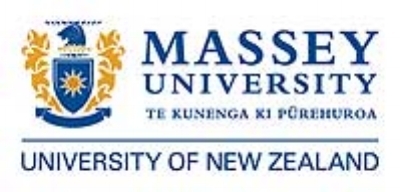Urban Neighbourhoods and Wellbeing
The design of neighbourhood streets and public spaces can foster (or constrain) social interaction, physical activity and a sense of place. This research programme investigates the physical, social and affective characteristics of the street and neighbourhood environments that promote health and wellbeing. Children, disabled young people as well as adults (including older adults) have all been engaged in various studies using a range of participatory, ethnographic and quantitative methods ( eg GPS, surveys, accelerometery). The research programme is led by Professor Karen Witten.
Participatory design with children
It is the people who live in them – including our children – and great public spaces, which make a city. Children have the competence and imagination to enhance the design of urban public spaces. Our team facilitated co-design workshops with children and young people at four sites across Tamaki Makaurau/ Auckland — Freyberg Square and the Eastern Viaduct in the CBD, and the Puhinui Stream and Mangere in South Auckland.
Read more
Rights to the city
As families with children move into inner-city neighbourhoods children’s everyday use of city streets brings them in contact with people who may be homeless or have mental illness or addictions – encounters they can find unsettling. The hyperdiversity of our cities raises questions about how to ensure all citizens have a right to the city.
Read more
Kids in the city
If parents experience neighbourhoods as socially cohesive and connected their children are more likely to move and play independently in local streets. Parental concerns differ by ethnic group. For NZ European, Maori, Samoan and other Pacific parents, ‘people danger’ was the most common reason given for not letting their children go out alone, whereas for Asian and Indian parents, ‘traffic danger’ was the most common concern.
Read more
More information on our Urban Neigbourhoods and Health research here
ACTIVATION (Activating Change Through InterVentions for Active Travel In Our Neighbourhoods)
Urban design that enables safe and easy walking, biking, and public transport (active travel) access to the destinations of daily life – work, whānau, friends, public spaces, services, and amenities – can support physical activity, social connections, and for older citizens, ageing in place. It can also improve air quality and reduce carbon emissions. However, low density urban form predominates in the cities and neighbourhoods in Aotearoa/New Zealand and car dependency and use is entrenched. Supportive active travel infrastructure is a necessary starting point for encouraging mode shift from motor vehicles to walking, cycling and public transport. But is it enough to trigger change across our suburban neighbourhoods? Or are new services and social/cultural interventions also needed.
Identifying an effective ‘mix’ of interventions to achieve mode shift to active travel is the aim of ACTIVATION, funded by the Aging Well and Healthier Lives National Science Challenges. The research has two study locations, Māngere in South Auckland and central Christchurch. In Māngere this research builds on Te Ara Mua-Future Streets (see Transport), a longitudinal controlled intervention study. It includes investigating walking and cycling cultures in South Auckland kaumatua and Pacific elders’ experiences of active travel streetscapes changes in Māngere, an exploration of what re-indigenising streetscapes would mean and look like for mana whenua, trials of e-bike access run in association with Triple Teez, a local bike promotion group, and a study of interagency collaboration around planning active travel infrastructure provision in a Kainga Ora development.
For further information please contact Professor Karen Witten: k.witten@massey.ac.nz
Interagency Collaboration for Mode Shift Māngere West, Auckland
Kāinga Ora is transforming the built environment in parts of Māngere, replacing state homes on large sites with higher density, mixed tenure developments. Improving active travel infrastructure can be a feature of large-scale precinct redevelopments. The team is investigating barriers and enablers to interagency collaboration around the planning, design and funding of new active travel infrastructure in the Māngere West precinct. Interviews were conducted in 2021 and again in 2023 with representatives from Kāinga Ora, Auckland Council, Auckland Transport, and consultants contracted by these agencies. A socio-technical systems approach is being employed to analyse the technological and social interactions within and between organisations, emphasising how governance structures, decision-making processes, and institutional norms influence practices and outcomes. Alignment between the transport, housing and local government sectors is strong at a strategic level, but delivery can stall due to lack of agreement over design features and funding responsibilities, especially the costs of long-term asset maintenance. Innovative solutions struggle for acceptance when considered alongside business-as-usual designs and their well-established long-term maintenance costs.





